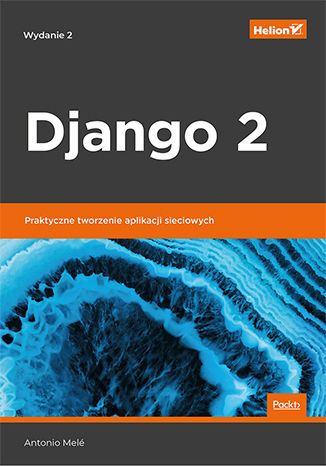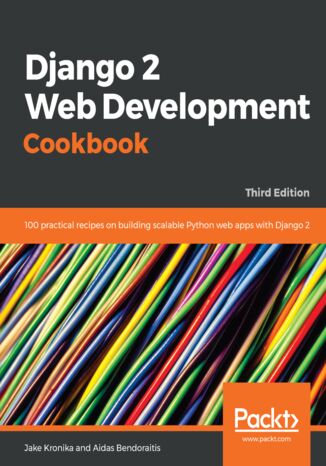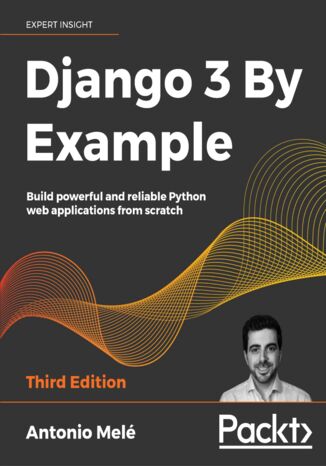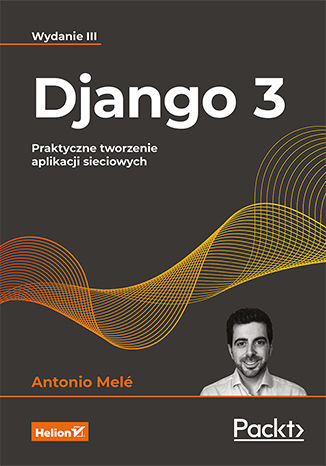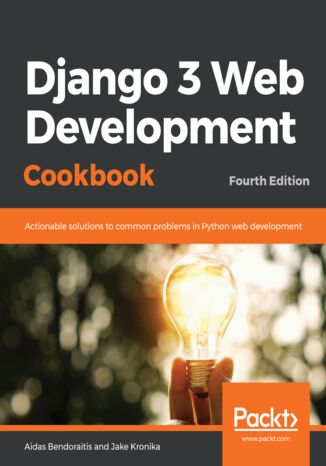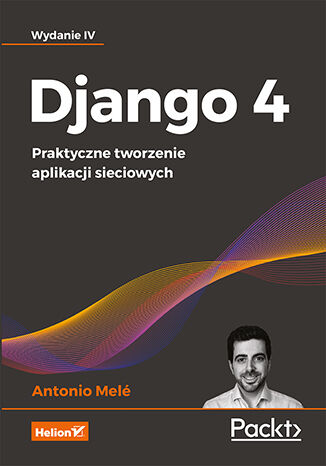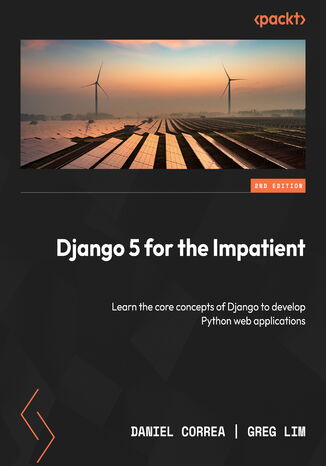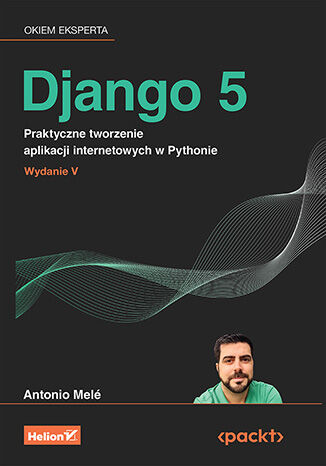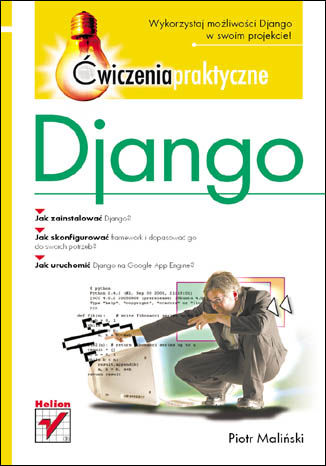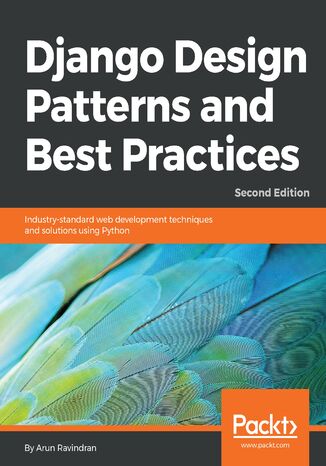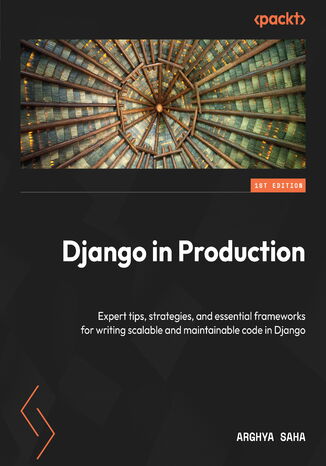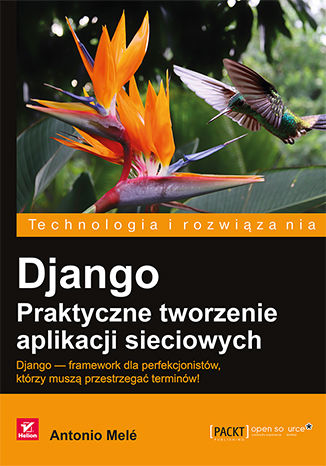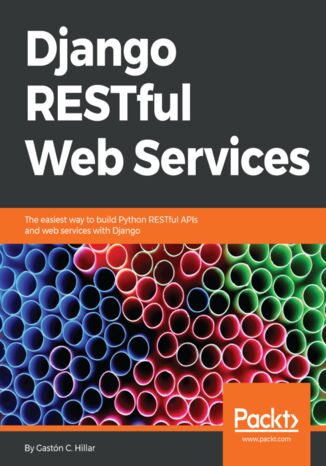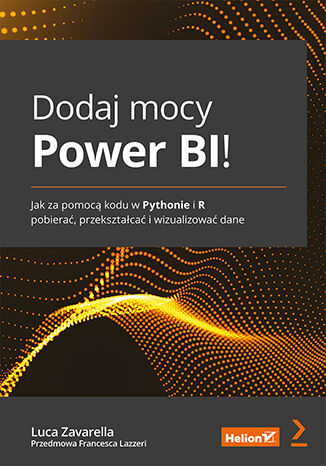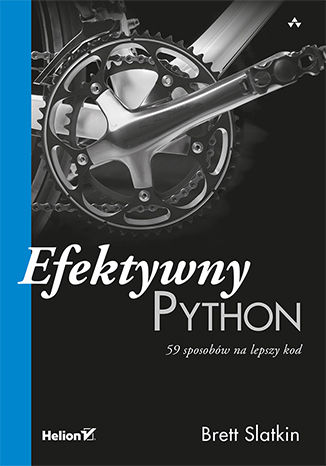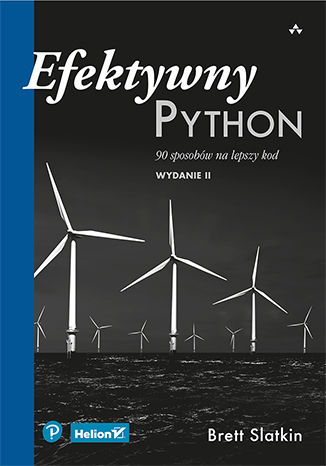Kategorien
E-Books
-
Wirtschaft
- Bitcoin
- Geschäftsfrau
- Coaching
- Controlling
- E-Business
- Ökonomie
- Finanzen
- Börse und Investitionen
- Persönliche Kompetenzen
- Computer im Büro
- Kommunikation und Verhandlungen
- Kleines Unternehmen
- Marketing
- Motivation
- Multimedia-Training
- Immobilien
- Überzeugung und NLP
- Steuern
- Sozialpolitik
- Handbȕcher
- Präsentationen
- Führung
- Public Relation
- Berichte, Analysen
- Geheimnis
- Social Media
- Verkauf
- Start-up
- Ihre Karriere
- Management
- Projektmanagement
- Personal (HR)
-
Für Kinder
-
Für Jugendliche
-
Bildung
-
Enzyklopädien, Wörterbücher
-
E-Presse
- Architektura i wnętrza
- Sicherheit und Gesundheit am Arbeitsplatz
- Biznes i Ekonomia
- Haus und Garten
- E-Business
- Ekonomia i finanse
- Esoterik
- Finanzen
- Persönliche Finanzen
- Unternehmen
- Fotografie
- Informatik
- HR und Gehaltsabrechnung
- Frauen
- Computer, Excel
- Buchhaltung
- Kultur und Literatur
- Wissenschaftlich und akademisch
- Umweltschutz
- meinungsbildend
- Bildung
- Steuern
- Reisen
- Psychologie
- Religion
- Landwirtschaft
- Buch- und Pressemarkt
- Transport und Spedition
- Gesundheit und Schönheit
-
Geschichte
-
Informatik
- Office-Programme
- Datenbank
- Bioinformatik
- IT Branche
- CAD/CAM
- Digital Lifestyle
- DTP
- Elektronik
- Digitale Fotografie
- Computergrafik
- Spiele
- Hacking
- Hardware
- IT w ekonomii
- Wissenschaftliche Pakete
- Schulbücher
- Computergrundlagen
- Programmierung
- Mobile-Programmierung
- Internet-Server
- Computernetzwerke
- Start-up
- Betriebssysteme
- Künstliche Inteligenz
- Technik für Kinder
- Webmaster
-
Andere
-
Fremdsprachen lernen
-
Kultur und Kunst
-
Lektüre
-
Literatur
- Anthologien
- Ballade
- Biografien und Autobiografien
- Für Erwachsene
- Drama
- Tagebücher, Memoiren, Briefe
- Epos
- Essay
- Science Fiction
- Felietonys
- Fiktion
- Humor, Satire
- Andere
- Klassisch
- Krimi
- Sachbücher
- Belletristik
- Mity i legendy
- Nobelpreisträger
- Kurzgeschichten
- Gesellschaftlich
- Okultyzm i magia
- Erzählung
- Erinnerungen
- Reisen
- Gedicht
- Poesie
- Politik
- Populärwissenschaftlich
- Roman
- Historischer Roman
- Prosa
- Abenteuer
- Journalismus
- Reportage
- Romans i literatura obyczajowa
- Sensation
- Thriller, Horror
- Interviews und Erinnerungen
-
Naturwissenschaften
-
Sozialwissenschaften
-
Schulbücher
-
Populärwissenschaft und akademisch
- Archäologie
- Bibliotekoznawstwo
- Filmwissenschaft
- Philologie
- Polnische Philologie
- Philosophie
- Finanse i bankowość
- Erdkunde
- Wirtschaft
- Handel. Weltwirtschaft
- Geschichte und Archäologie
- Kunst- und Architekturgeschichte
- Kulturwissenschaft
- Linguistik
- Literaturwissenschaft
- Logistik
- Mathematik
- Medizin
- Geisteswissenschaften
- Pädagogik
- Lehrmittel
- Populärwissenschaftlich
- Andere
- Psychologie
- Soziologie
- Theatrologie
- Teologie
- Theorien und Wirtschaftswissenschaften
- Transport i spedycja
- Sportunterricht
- Zarządzanie i marketing
-
Handbȕcher
-
Spielanleitungen
-
Professioneller und fachkundige Leitfaden
-
Jura
- Sicherheit und Gesundheit am Arbeitsplatz
- Geschichte
- Verkehrsregeln. Führerschein
- Rechtswissenschaften
- Gesundheitswesen
- Allgemeines. Wissenskompendium
- akademische Bücher
- Andere
- Bau- und Wohnungsrecht
- Zivilrecht
- Finanzrecht
- Wirtschaftsrecht
- Wirtschafts- und Handelsrecht
- Strafrecht
- Strafrecht. Kriminelle Taten. Kriminologie
- Internationales Recht
- Internationales und ausländisches Recht
- Gesundheitsschutzgesetz
- Bildungsrecht
- Steuerrecht
- Arbeits- und Sozialversicherungsrecht
- Öffentliches, Verfassungs- und Verwaltungsrecht
- Familien- und Vormundschaftsrecht
- Agrarrecht
- Sozialrecht, Arbeitsrecht
- EU-Recht
- Industrie
- Agrar- und Umweltschutz
- Wörterbücher und Enzyklopädien
- Öffentliche Auftragsvergabe
- Management
-
Führer und Reisen
- Afrika
- Alben
- Südamerika
- Mittel- und Nordamerika
- Australien, Neuseeland, Ozeanien
- Österreich
- Asien
- Balkan
- Naher Osten
- Bulgarien
- China
- Kroatien
- Tschechische Republik
- Dänemark
- Ägypten
- Estland
- Europa
- Frankreich
- Berge
- Griechenland
- Spanien
- Niederlande
- Island
- Litauen
- Lettland
- Mapy, Plany miast, Atlasy
- Miniführer
- Deutschland
- Norwegen
- Aktive Reisen
- Polen
- Portugal
- Andere
- Przewodniki po hotelach i restauracjach
- Russland
- Rumänien
- Slowakei
- Slowenien
- Schweiz
- Schweden
- Welt
- Türkei
- Ukraine
- Ungarn
- Großbritannien
- Italien
-
Psychologie
- Lebensphilosophien
- Kompetencje psychospołeczne
- zwischenmenschliche Kommunikation
- Mindfulness
- Allgemeines
- Überzeugung und NLP
- Akademische Psychologie
- Psychologie von Seele und Geist
- Arbeitspsychologie
- Relacje i związki
- Elternschafts- und Kinderpsychologie
- Problemlösung
- Intellektuelle Entwicklung
- Geheimnis
- Sexualität
- Verführung
- Aussehen ind Image
- Lebensphilosophien
-
Religion
-
Sport, Fitness, Diäten
-
Technik und Mechanik
Hörbücher
-
Wirtschaft
- Bitcoin
- Geschäftsfrau
- Coaching
- Controlling
- E-Business
- Ökonomie
- Finanzen
- Börse und Investitionen
- Persönliche Kompetenzen
- Kommunikation und Verhandlungen
- Kleines Unternehmen
- Marketing
- Motivation
- Immobilien
- Überzeugung und NLP
- Steuern
- Sozialpolitik
- Handbȕcher
- Präsentationen
- Führung
- Public Relation
- Geheimnis
- Social Media
- Verkauf
- Start-up
- Ihre Karriere
- Management
- Projektmanagement
- Personal (HR)
-
Für Kinder
-
Für Jugendliche
-
Bildung
-
Enzyklopädien, Wörterbücher
-
E-Presse
-
Geschichte
-
Informatik
-
Andere
-
Fremdsprachen lernen
-
Kultur und Kunst
-
Lektüre
-
Literatur
- Anthologien
- Ballade
- Biografien und Autobiografien
- Für Erwachsene
- Drama
- Tagebücher, Memoiren, Briefe
- Epos
- Essay
- Science Fiction
- Felietonys
- Fiktion
- Humor, Satire
- Andere
- Klassisch
- Krimi
- Sachbücher
- Belletristik
- Mity i legendy
- Nobelpreisträger
- Kurzgeschichten
- Gesellschaftlich
- Okultyzm i magia
- Erzählung
- Erinnerungen
- Reisen
- Poesie
- Politik
- Populärwissenschaftlich
- Roman
- Historischer Roman
- Prosa
- Abenteuer
- Journalismus
- Reportage
- Romans i literatura obyczajowa
- Sensation
- Thriller, Horror
- Interviews und Erinnerungen
-
Naturwissenschaften
-
Sozialwissenschaften
-
Populärwissenschaft und akademisch
- Archäologie
- Philosophie
- Wirtschaft
- Handel. Weltwirtschaft
- Geschichte und Archäologie
- Kunst- und Architekturgeschichte
- Kulturwissenschaft
- Literaturwissenschaft
- Mathematik
- Medizin
- Geisteswissenschaften
- Pädagogik
- Lehrmittel
- Populärwissenschaftlich
- Andere
- Psychologie
- Soziologie
- Teologie
- Zarządzanie i marketing
-
Handbȕcher
-
Professioneller und fachkundige Leitfaden
-
Jura
-
Führer und Reisen
-
Psychologie
- Lebensphilosophien
- zwischenmenschliche Kommunikation
- Mindfulness
- Allgemeines
- Überzeugung und NLP
- Akademische Psychologie
- Psychologie von Seele und Geist
- Arbeitspsychologie
- Relacje i związki
- Elternschafts- und Kinderpsychologie
- Problemlösung
- Intellektuelle Entwicklung
- Geheimnis
- Sexualität
- Verführung
- Aussehen ind Image
- Lebensphilosophien
-
Religion
-
Sport, Fitness, Diäten
-
Technik und Mechanik
Videokurse
-
Datenbank
-
Big Data
-
Biznes, ekonomia i marketing
-
Cybersicherheit
-
Data Science
-
DevOps
-
Für Kinder
-
Elektronik
-
Grafik / Video / CAX
-
Spiele
-
Microsoft Office
-
Entwicklungstools
-
Programmierung
-
Persönliche Entwicklung
-
Computernetzwerke
-
Betriebssysteme
-
Softwaretest
-
Mobile Geräte
-
UX/UI
-
Web development
-
Management
Podcasts
- E-Books
- Programmierung
- Python
Python
Django 2. Praktyczne tworzenie aplikacji sieciowych. Wydanie II
Django jest frameworkiem do budowy profesjonalnych aplikacji sieciowych w języku Python. Cieszy się zasłużoną opinią potężnego narzędzia, którego można się szybko nauczyć. Spodoba się każdemu, kto ceni prostotę użytkowania i pragmatyczne podejście do projektowania. Z pewnością Django jest atrakcyjnym rozwiązaniem dla programistów, którzy profesjonalnie podchodzą do tworzenia aplikacji WWW i stawiają na niezawodność. To drugie, zaktualizowane i uzupełnione wydanie cenionego podręcznika pisania aplikacji sieciowych w Django. Krok po kroku pokazano w nim pełny proces tworzenia oprogramowania, od pierwszych linii kodu po wdrożenie, z akcentem na praktyczną stronę pracy dewelopera. Nie tylko zaprezentowano technikę pracy z frameworkiem, ale też opisano zasady integrowania innych popularnych technologii z projektami Django. Książka pozwala również zapoznać się z metodami rozwiązywania typowych problemów z implementacją, a także - w sposób naturalny, niejako mimochodem - nauczyć się najlepszych praktyk programistycznych z wykorzystaniem łatwych do powielenia procedur. Najważniejsze zagadnienia omówione w książce: wprowadzenie do frameworka i tworzenie praktycznego projektu aplikacji implementacja zaawansowanych funkcji aplikacji sieciowych tworzenie modelu użytkownika i zintegrowane uwierzytelnianie praca z innymi technologiami, w tym zarządzanie płatnościami tłumaczenie aplikacji na wiele języków API typu RESTful Django - dla tych, którzy chcą mieć świetne wyniki!
Jake Kronika, Aidas Bendoraitis
Django is a framework designed to balance rapid web development with high performance. It handles high levels of user traffic and interaction, integrates with a variety of databases, and collects and processes data in real time. This book follows a task-based approach to guide you through developing with the Django 2.1 framework, starting with setting up and configuring Docker containers and a virtual environment for your project.You'll learn how to write reusable pieces of code for your models and manage database changes. You'll work with forms and views to enter and list data, applying practical examples using templates and JavaScript together for the optimum user experience. This cookbook helps you to adjust the built-in Django administration to fit your needs and sharpen security and performance to make your web applications as robust, scalable, and dependable as possible. You'll also explore integration with Django CMS, the popular content management suite.In the final chapters, you'll learn programming and debugging tricks and discover how collecting data from different sources and providing it to others in various formats can be a breeze. By the end of the book, you'll learn how to test and deploy projects to a remote dedicated server and scale your application to meet user demands.
If you want to learn the entire process of developing professional web applications with Python and Django, then this book is for you. In the process of building four professional Django projects, you will learn about Django 3 features, how to solve common web development problems, how to implement best practices, and how to successfully deploy your applications. In this book, you will build a blog application, a social image bookmarking website, an online shop, and an e-learning platform. Step-by-step guidance will teach you how to integrate popular technologies, enhance your applications with AJAX, create RESTful APIs, and set up a production environment for your Django projects. By the end of this book, you will have mastered Django 3 by building advanced web applications.
Django 3. Praktyczne tworzenie aplikacji sieciowych. Wydanie III
Twórz od podstaw rozbudowane i niezawodne aplikacje webowe w Pythonie Django jest potężnym frameworkiem służącym do tworzenia aplikacji internetowych w Pythonie. Pozwala na pełne wykorzystywanie zalet tego języka, takich jak przejrzystość, elastyczność, wszechstronność i łatwość uczenia się. Wykorzystywanie Django do budowania aplikacji w Pythonie jest atrakcyjną możliwością zarówno dla początkujących, jak i zaawansowanych programistów. Aby jednak zapewnić tworzonym projektom odpowiednią, profesjonalną jakość, trzeba się nauczyć rozwiązywać problemy powstające podczas tworzenia aplikacji internetowych, stosować najlepsze praktyki programistyczne, a także skutecznie wdrażać i testować aplikację. To trzecie wydanie praktycznego przewodnika po budowie aplikacji internetowych. Krok po kroku opisano w nim wszystkie istotne elementy procesu projektowania i wdrażania aplikacji: bloga, witryny społecznościowej, sklepu internetowego oraz platformy e-learningowej. Zawarte tu szczegółowe wskazówki pomogą integrować popularne technologie, usprawniać aplikacje z wykorzystaniem technik AJAX, tworzyć API REST oraz konfigurować środowisko produkcyjne dla projektów Django. Dzięki tej książce niepostrzeżenie opanujesz najistotniejsze zasady pracy w Django - i czym prędzej zaczniesz od podstaw budować praktyczne projekty. Nowością w tym wydaniu jest rozdział poświęcony projektowaniu serwera czatu z wykorzystaniem serwera Django Channels. W tej książce: praktyczna strona projektowania aplikacji internetowych podstawy Django, w tym ORM, szablony, adresy URL, formularze i uwierzytelnianie funkcje zaawansowane: niestandardowe pola modelu i oprogramowanie pośredniczące wykorzystanie technik AJAX, system płatności, CMS, API RESTful integracja projektu z takimi technologiami jak Redis, RabbitMQ, PostgreSQL i Channels wdrażanie projektów Django za pomocą NGINX, uWSGI i Daphne Django - wypróbowany framework dla profesjonalnych projektantów!
Aidas Bendoraitis, Jake Kronika
Django is a web framework for perfectionists with deadlines, designed to help you build manageable medium and large web projects in a short time span. This fourth edition of the Django Web Development Cookbook is updated with Django 3's latest features to guide you effectively through the development process.This Django book starts by helping you create a virtual environment and project structure for building Python web apps. You'll learn how to build models, views, forms, and templates for your web apps and then integrate JavaScript in your Django apps to add more features. As you advance, you'll create responsive multilingual websites, ready to be shared on social networks. The book will take you through uploading and processing images, rendering data in HTML5, PDF, and Excel, using and creating APIs, and navigating different data types in Django. You'll become well-versed in security best practices and caching techniques to enhance your website's security and speed. This edition not only helps you work with the PostgreSQL database but also the MySQL database. You'll also discover advanced recipes for using Django with Docker and Ansible in development, staging, and production environments.By the end of this book, you will have become proficient in using Django's powerful features and will be equipped to create robust websites.
Django 4. Praktyczne tworzenie aplikacji sieciowych. Wydanie IV
Django służy do tworzenia aplikacji internetowych w Pythonie. Pozwala w pełni skorzystać z zalet tego języka, a przy tym jest łatwy do nauki. Praca z Django jest atrakcyjna dla programistów o różnym stopniu zaawansowania, co potwierdzają badania ankietowe serwisu Stack Overflow. Aby zapewnić swoim aplikacjom odpowiednią jakość, trzeba poznać sposób działania Django, stosować najlepsze praktyki, a także skutecznie wdrażać i testować aplikację. Być może Django jest dla Ciebie zupełną nowością, a może posiadasz już pewną wiedzę na jego temat i chcesz wycisnąć z niego jak najwięcej ― czwarte wydanie poświęconego mu podręcznika pomoże Ci opanować kluczowe umiejętności związane z obsługą tego frameworka. Pokazano tu techniki tworzenia kilku różnorodnych projektów, opisano przy tym krok po kroku wszystkie istotne etapy procesu rozwijania i wdrażania aplikacji bloga, serwisu społecznościowego, aplikacji e-commerce i platformy e-learningowej. Dowiesz się też, jak pomyślnie zastosować w swoich projektach takie technologie jak PostgreSQL, Redis, Celery, RabbitMQ i Memcached. Lektura przygotuje Cię do tego, co najistotniejsze podczas pracy z Django: budowania od podstaw poprawnie działających aplikacji. Jeśli programujesz w Pythonie i znasz przynajmniej w stopniu podstawowym HTML i JavaScript ― to propozycja dla Ciebie. W książce: podstawy Django, w tym modele, ORM, widoki, szablony, adresy URL, formularze, uwierzytelnianie, sygnały i oprogramowanie middleware integracja projektu aplikacji Django z zewnętrznym oprogramowaniem tworzenie aplikacji asynchronicznych (ASGI) konfiguracja środowiska produkcyjnego tworzenie złożonych aplikacji webowych i rozwiązywanie praktycznych problemów Django: wypróbowany framework dla perfekcjonistów z napiętymi terminami!
Learning Django can be a challenging and time-consuming activity without the right guidance. With hundreds of tutorials, loads of documentation, and unclear explanations out there, it’s easy to lose sight of what’s most important. This book stands out by teaching you how to use Django in just a few days with a focused approach. In this second edition, you’ll go on a fun, practical, and pragmatic journey to learning full-stack development with Django 5. You’ll start building your first Django app within minutes. As you progress, you’ll learn from concise explanations that will help you get to grips with some of the most important Django features, including URLs, views, templates, models, CSS inclusion, image storage, Django admin panel, and more. You’ll also understand how to design Django MVT (Model-View-Template) architectures and implement them. Additionally, you’ll use Django to develop a movie store application and deploy it to the internet.By the end of this book, you’ll be able to build and deploy your own Django web applications confidently.
Django 5. Praktyczne tworzenie aplikacji internetowych w Pythonie. Wydanie V
Django pozwala na pełne wykorzystanie zalet Pythona, a przy tym jest bardzo przyjemny w pracy. Dzięki niemu programiści na różnym poziomie zaawansowania mogą efektywnie tworzyć aplikacje internetowe. W corocznej ankiecie dla programistów serwisu Stack Overflow od kilku lat Django jest wybierany jako jeden z najbardziej lubianych frameworków webowych. To piąte, zaktualizowane i uzupełnione wydanie bestsellerowego przewodnika po tworzeniu aplikacji internetowych za pomocą Django. Pokazano tu proces planowania i budowy atrakcyjnych aplikacji, rozwiązywania typowych problemów i implementacji najlepszych praktyk programistycznych. Podczas tworzenia aplikacji, takich jak blog, serwis społecznościowy, aplikacja e-commerce i platforma e-learningowa, zapoznasz się z szerokim zakresem zagadnień związanych z tworzeniem złożonych aplikacji internetowych w Pythonie. Krok po kroku, dzięki szczegółowym planom projektów, dowiesz się, jakie korzyści niesie ze sobą praca z Django 5, i zrozumiesz zasady tworzenia aplikacji przy użyciu tego frameworka. W książce: podstawy Django, w tym modele, ORM, widoki, szablony, adresy URL, formularze, uwierzytelnianie, sygnały i warstwy middleware integracja projektu aplikacji Django z zewnętrznym oprogramowaniem praca z Redis, PostgreSQL, Celery, RabbitMQ i Memcached konfiguracja środowiska produkcyjnego za pomocą Docker Compose budowa RESTful API za pomocą Django Rest Framework implementacja zaawansowanych funkcji i tworzenie ASGI Django 5. Ciesz się doskonałością swoich aplikacji!
Wykorzystaj możliwości Django w swoim projekcie! Jak zainstalować Django? Jak skonfigurować framework i dopasować go do swoich potrzeb? Jak uruchomić Django na Google App Engine? Django nie jest kolejnym frameworkiem napisanym w języku PHP. To elitarne rozwiązanie, wykorzystujące język Python, oparte na wzorcu projektowym MVC. Pierwotnie Django zostało opracowane z myślą o stronach "prasowych", z dużą ilością newsów. Pierwsza publiczna wersja ujrzała światło dzienne w 2005 roku. Od tego czasu Django odnotowuje ciągły wzrost popularności, a wachlarz jego zastosowań znacznie się rozrósł! Dzięki tej książce również Ty będziesz mógł wykorzystać ten framework w swoim projekcie! Sprawdzona formuła książki, kładąca nacisk na ćwiczenia, pozwoli Ci błyskawicznie opanować sposób instalacji oraz stworzyć i skonfigurować Twój własny projekt. Dowiesz się także, jak obsłużyć błędy oraz kanały RSS czy też wygenerować pliki PDF. Ponadto nauczysz się konfigurować serwery Apache 2 oraz Nginx. Ćwiczenia zawarte w tej książce pozwolą Ci szybko i przyjemnie wdrożyć Django w Twoim projekcie aplikacji WWW! Sposób instalacji Django Tworzenie nowego projektu Konfiguracja projektu Wykorzystanie panelu administracyjnego Mapowanie widoków Obsługa formularzy Reagowanie na błędy Udostępnienie kanału RSS Generowanie plików PDF Zasady konfiguracji serwera Apache 2 z mod_python Konfiguracja serwera Nginx Przegląd firm oferujących hosting z obsługą Pythona Django i Google App Engine Stwórz wydajną i przyjemną w zarządzaniu witrynę WWW!
Building secure and maintainable web applications requires comprehensive knowledge. The second edition of this book not only sheds light on Django, but also encapsulates years of experience in the form of design patterns and best practices. Rather than sticking to GoF design patterns, the book looks at higher-level patterns. Using the latest version of Django and Python, you’ll learn about Channels and asyncio while building a solid conceptual background. The book compares design choices to help you make everyday decisions faster in a rapidly changing environment.You’ll first learn about various architectural patterns, many of which are used to build Django. You’ll start with building a fun superhero project by gathering the requirements, creating mockups, and setting up the project. Through project-guided examples, you’ll explore the Model, View, templates, workflows, and code reusability techniques. In addition to this, you’ll learn practical Python coding techniques in Django that’ll enable you to tackle problems related to complex topics such as legacy coding, data modeling, and code reusability.You’ll discover API design principles and best practices, and understand the need for asynchronous workflows. During this journey, you’ll study popular Python code testing techniques in Django, various web security threats and their countermeasures, and the monitoring and performance of your application.
You may have got your first Django developer job after a six-week bootcamp or online course, and that’s great, but what’s next? In small companies, mentorship can be hard to come by and gaining the traits of a senior developer without that can take a long time. This is precisely where Django in Production comes into play.This book will first delve into the true meaning of good practice and help you understand the rationale behind industry professionals building websites in specific ways to develop a solid foundation for your Django projects. Next, you will uncover hidden Django secrets through hands-on exploration, leveraging the power of Docker and version control to your advantage. You will gain insights into mastering Git hooks for efficient code maintenance, establishing a robust CI pipeline, and harnessing the capabilities of AWS Beanstalk. These tools will empower you to develop highly scalable products—an essential skill set for aspiring developers transitioning from junior to senior roles. Later, you will understand the significance of monitoring and be introduced to industry-standard tools utilized by professionals for effective monitoring practices.By the end of this book, you will have set yourself apart from the crowd, equipped with the knowledge and expertise to thrive as a seasoned Django developer.
Django. Praktyczne tworzenie aplikacji sieciowych
Django to bardzo przydatne narzędzie ułatwiające pisanie aplikacji sieciowych w języku Python. Jest uważane za framework, który łączy wielkie możliwości z prostotą użytkowania. Pozwala na szybkie tworzenie oprogramowania na podstawie przejrzystych i praktycznych projektów. To atrakcyjne rozwiązanie dla programistów zarówno początkujących, jak i doświadczonych. Książka, którą trzymasz w rękach, jest znakomitym podręcznikiem pisania aplikacji sieciowych w Django. Krok po kroku pokazano tu pełny proces tworzenia profesjonalnego oprogramowania, a przykładami, na których oparto poszczególne rozdziały, są rzeczywiste projekty aplikacji. Dzięki takiemu podejściu można bardzo szybko zapoznać się z frameworkiem, nauczyć się rozwiązywania często występujących problemów i w naturalny sposób stosować najlepsze praktyki programistyczne. Autorzy pokazali również, w jaki sposób w projektach Django stosować kilka popularnych technologii związanych z aplikacjami sieciowymi. Najważniejsze zagadnienia omówione w książce: przygotowanie środowiska i wprowadzenie do frameworka, tworzenie praktycznego projektu aplikacji umożliwiającego dalsze modyfikacje i rozbudowę, implementacja zaawansowanych funkcjonalności aplikacji sieciowych, praca z bazami danych Redis i innymi technologiami (w tym Celery, Solr i Memcached), tłumaczenie aplikacji na wiele języków, API typu RESTful. Django — framework dla perfekcjonistów, którzy muszą przestrzegać terminów!
Django is a Python web framework that makes the web development process very easy. It reduces the amount of trivial code, which simplifies the creation of web applications and results in faster development. It is very powerful and a great choice for creating RESTful web services.If you are a Python developer and want to efficiently create RESTful web services with Django for your apps, then this is the right book for you.The book starts off by showing you how to install and configure the environment, required software, and tools to create RESTful web services with Django and the Django REST framework. We then move on to working with advanced serialization and migrations to interact with SQLite and non-SQL data sources. We will use the features included in the Django REST framework to improve our simple web service.Further, we will create API views to process diverse HTTP requests on objects, go through relationships and hyperlinked API management, and then discover the necessary steps to include security and permissions related to data models and APIs. We will also apply throttling rules and run tests to check that versioning works as expected. Next we will run automated tests to improve code coverage. By the end of the book, you will be able to build RESTful web services with Django.
Dodaj mocy Power BI! Jak za pomocą kodu w Pythonie i R pobierać, przekształcać i wizualizować dane
Luca Zavarella, Francesca Lazzeri
Ważnym zadaniem inżynierów danych jest kreowanie modeli uczenia maszynowego. Używa się do tego narzędzi do analizy biznesowej, takich jak Power BI. Możliwości Power BI są imponujące, a można je dodatkowo rozbudować. Jedną z ciekawszych metod wzbogacania modelu danych i wizualizacji Power BI jest zastosowanie złożonych algorytmów zaimplementowanych w językach Python i R. W ten sposób można nie tylko tworzyć interesujące wizualizacje danych, ale także pozyskiwać dzięki nim kluczowe dla biznesu informacje. Dzięki tej książce dowiesz się, jak to zrobić. Zaczniesz od przygotowania środowiska Power BI do używania skryptów w Pythonie i R. Następnie będziesz importować dane z nieobsługiwanych obiektów i przekształcać je za pomocą wyrażeń regularnych i złożonych algorytmów. Nauczysz się wywoływać zewnętrzne interfejsy API i korzystać z zaawansowanych technik w celu przeprowadzenia dogłębnych analiz i wyodrębnienia cennych informacji za pomocą narzędzi statystyki i uczenia maszynowego, a także poprzez zastosowanie optymalizacji liniowej i innych algorytmów. Zapoznasz się również z głównymi cechami statystycznymi zestawów danych i z metodami tworzenia różnych wykresów ułatwiających zrozumienie relacji między zmiennymi. Najciekawsze zagadnienia: złożone przekształcanie danych w Power BI za pomocą skryptów Pythona i R anonimizacja i pseudonimizacja danych praca z dużymi zestawami danych wartości odstające i brakujące dla danych wielowymiarowych i szeregów czasowych tworzenie złożonych wizualizacji danych Wyzwól potężną moc Power BI!
Efektywny Python. 59 sposobów na lepszy kod
Twórz zoptymalizowany i efektywny kod! Python to jeden z najstarszych używanych języków programowania. Co ciekawe, jego nazwa wcale nie pochodzi od zwierzęcia, a od popularnego serialu komediowego. Język ten daje programistom ogromne pole do popisu, a ponadto posiada sporo bibliotek realizujących najbardziej wymyślne zadania. Z uwagi na te atuty rozpoczęcie programowania w tym języku nie powinno przysporzyć Ci większych problemów. Jeżeli jednak chcesz robić to efektywnie, potrzebujesz tej książki. Sięgnij po nią i poznaj 59 sposobów na tworzenie lepszego kodu w Pythonie! W kolejnych rozdziałach znajdziesz bezcenne informacje na temat programowania zgodnego z duchem Pythona, funkcji, klas i dziedziczenia oraz metaklas i atrybutów. Dalsze strony zawierają przydatną wiedzę na temat wątków i współbieżności, wbudowanych modułów oraz sposobów zarządzania kodem. Książka ta sprawdzi się w rękach każdego programisty pracującego w języku Python. Warto ją mieć! W książce poruszono następujące zagadnienia: Podpowiedzi na wszystkich najważniejszych obszarach programowania w Pythonie 3.x i 2.x wraz z dokładnymi objaśnieniami i przykładami. Najlepsze praktyki dotyczące tworzenia funkcji czytelnie wyrażających intencje, promujących wielokrotne użycie tego samego kodu i pomagających uniknąć błędów. Omówienie tematu właściwego wyrażenia zachowania programu za pomocą klas i obiektów. Podpowiedzi pomagające uniknąć pułapek podczas użycia metaklas i atrybutów dynamicznych. Prezentacja znacznie efektywniejszego podejścia w zakresie współbieżności i równoległości. Przedstawienie lepszych technik i sposobów użycia wbudowanych modułów Pythona. Prezentacja narzędzi i najlepszych praktyk stosowanych podczas wspólnej pracy nad projektami. Rozwiązania dotyczące usuwania błędów, testowania i optymalizacji, co prowadzi do poprawy jakości kodu i wydajności jego działania. Poznaj najlepsze praktyki programowania w Pythonie!
Efektywny Python. 90 sposobów na lepszy kod. Wydanie II
Python słusznie cieszy się stale rosnącym uznaniem programistów: jest wszechstronny i efektywny, pozwala też na tworzenie wysokiej jakości oprogramowania. Język ten ma poza tym wiele trudniejszych do uchwycenia zalet. Aby uzyskać naprawdę imponujące efekty w zakresie wydajności kodu, jego przenaszalności i bezpieczeństwa, trzeba zagłębić się w dość subtelne niuanse kodowania. Wielu programistów, choć posiada spore doświadczenie w programowaniu w innych językach, nie dostrzega tych zależności. Z kolei osoby dopiero rozpoczynające przygodę z programowaniem mogą poczuć się zaskoczone i zdezorientowane, jeśli nie zdołają uniknąć kilku nieoczywistych błędów podczas pracy. To drugie, zaktualizowane i uzupełnione wydanie podręcznika programowania w duchu Pythona. Zawarty tu materiał umożliwia wykorzystanie tego języka do tworzenia wyjątkowo solidnego i niezwykle wydajnego kodu źródłowego. Książka jest napisana w zwięzłym stylu i ma przemyślany układ, oparty na scenariuszach, dzięki czemu przystępnie przedstawia 90 najlepszych praktyk, wskazówek i skrótów oraz wyjaśnia ich działanie na rzeczywistych przykładach kodu. Pokazano tu szereg mało znanych, być może nieco dziwnych sztuczek i sposobów udoskonalających pracę kodu źródłowego. Przyswojenie zaprezentowanych tu praktyk pozwoli Ci tworzyć kod łatwy do zrozumienia, obsługi i dalszej rozbudowy. W tym wydaniu treść poszczególnych wskazówek zaktualizowano do Pythona 3, a poszczególne przykłady kodu zostały przejrzane i udoskonalone - najlepsze praktyki również ewoluują! W tej książce: nowe rozwiązania dla wszystkich najważniejszych obszarów programowania w Pythonie techniki stosowania konstrukcji składanych i funkcji generatorów właściwe korzystanie z klas, obiektów, metaklas i atrybutów dynamicznych współbieżność, równoległość, optymalizacja i bezpieczeństwo kodu wbudowane moduły Pythona do debugowania i testowania narzędzia i najlepsze praktyki podczas wspólnej pracy nad projektami Python: elegancja, wydajność i ekspresja kodu!

